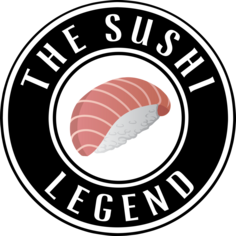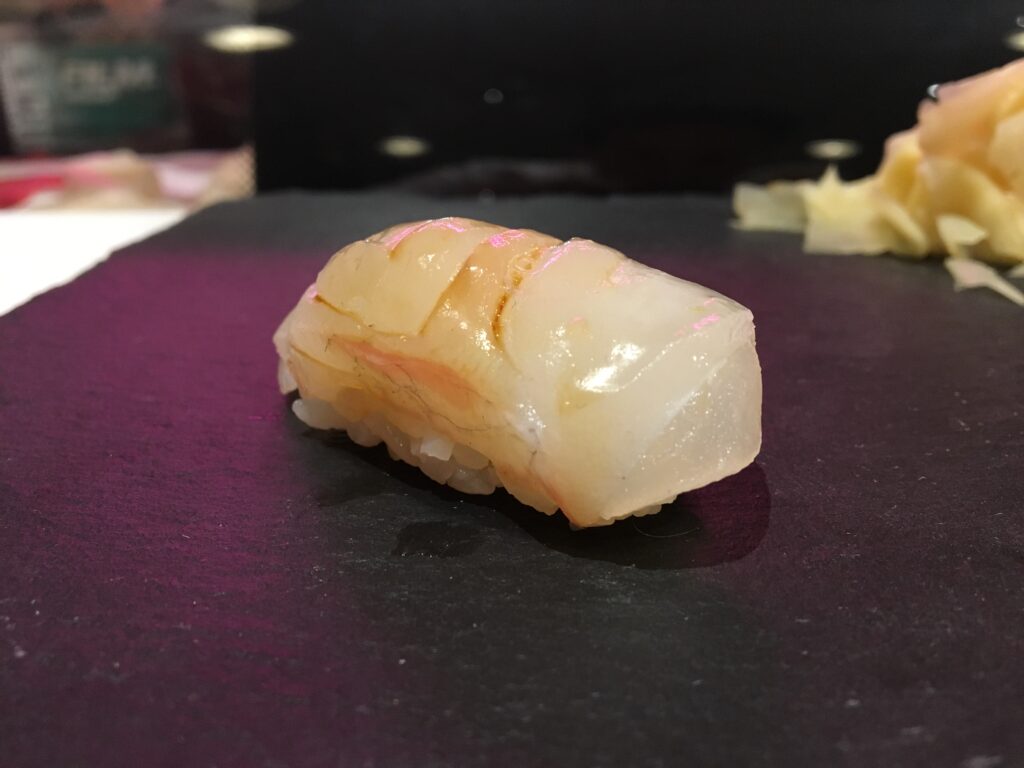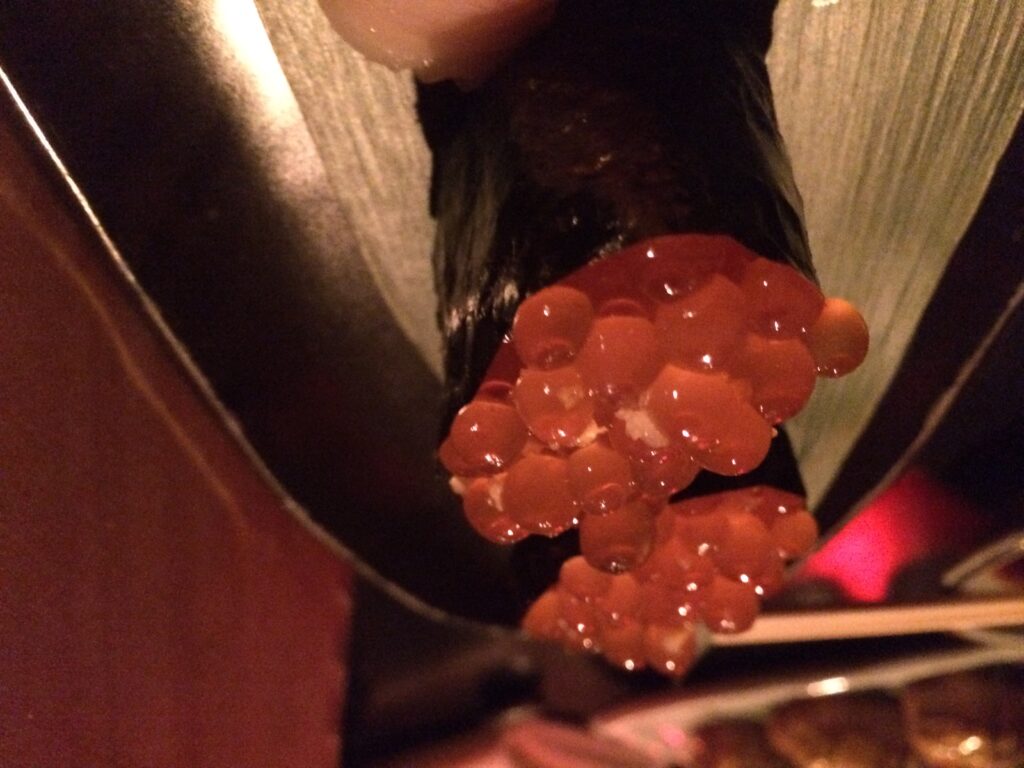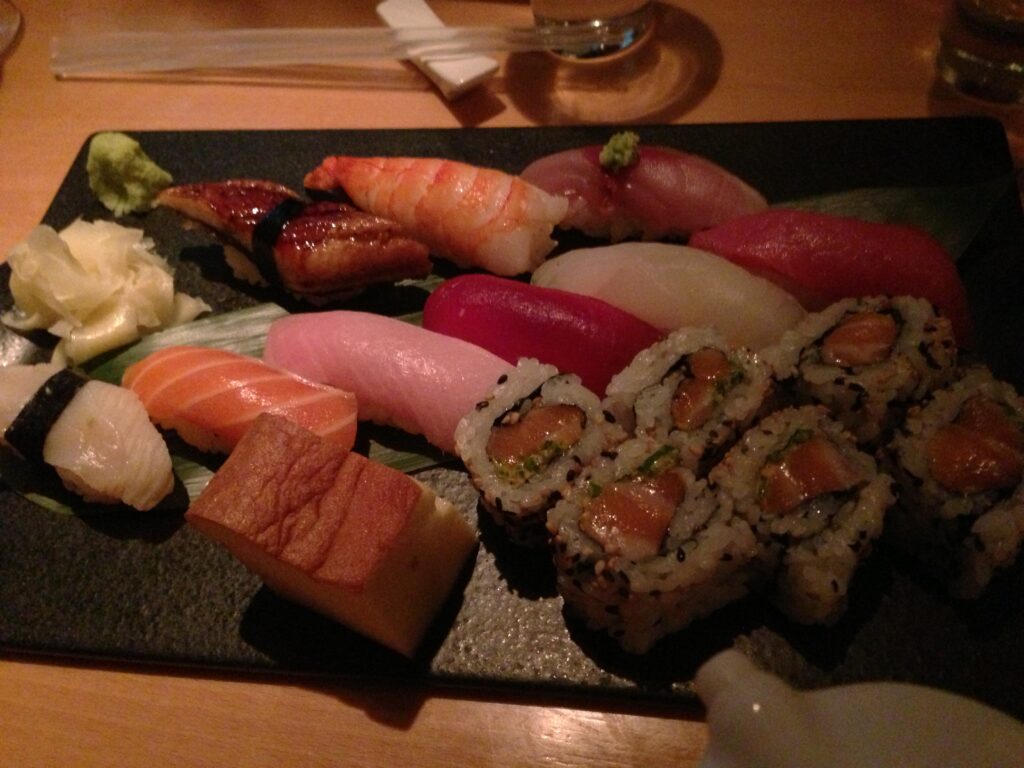
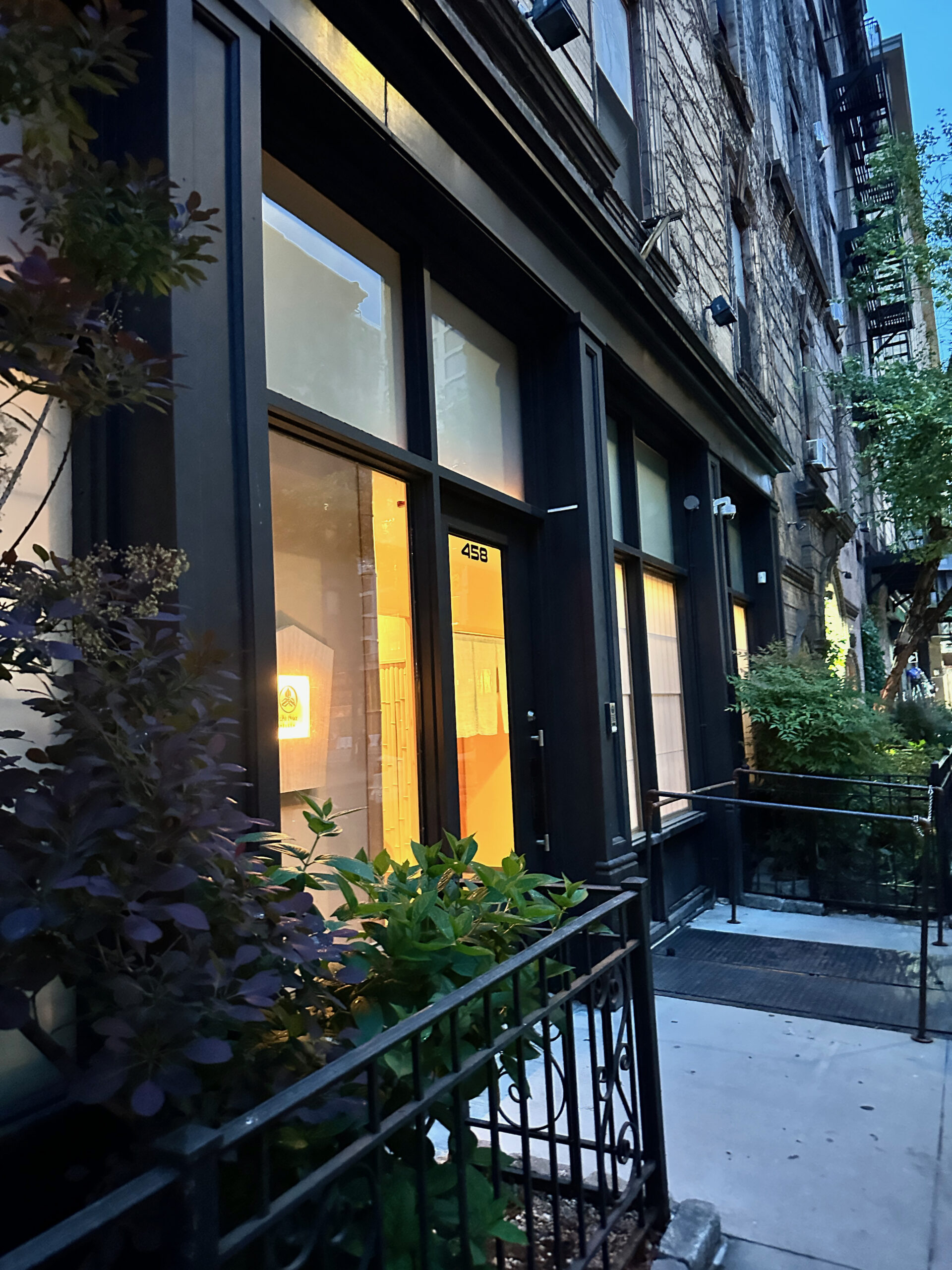
Outside Noz 17 (fair warning, it’s west – way west).
The bar at Noz 17 serves New York’s best omakase under $200
My grade 7 english teacher taught me to save the conclusion for the end of the story, but I hate surprises. Surprise parties in particular. I realized a long time ago that they exploit the surprisee for the happiness of the surprisers. Complete nonsense.
On one hand, it makes sense the Noz 17 bar omakase would be so good.
The 4-seat nook/broom closet is a sideroom at Noz 17, member of the Noz Group of sushiya. Membership has its privileges; access to better ingredients at scaled down prices, and access to better talent, eager to work under sushi legends Nozomu Abe, of Sushi Noz (upper east side, reviewed here) , and Junichi Matsuzaki, of Noz 17.
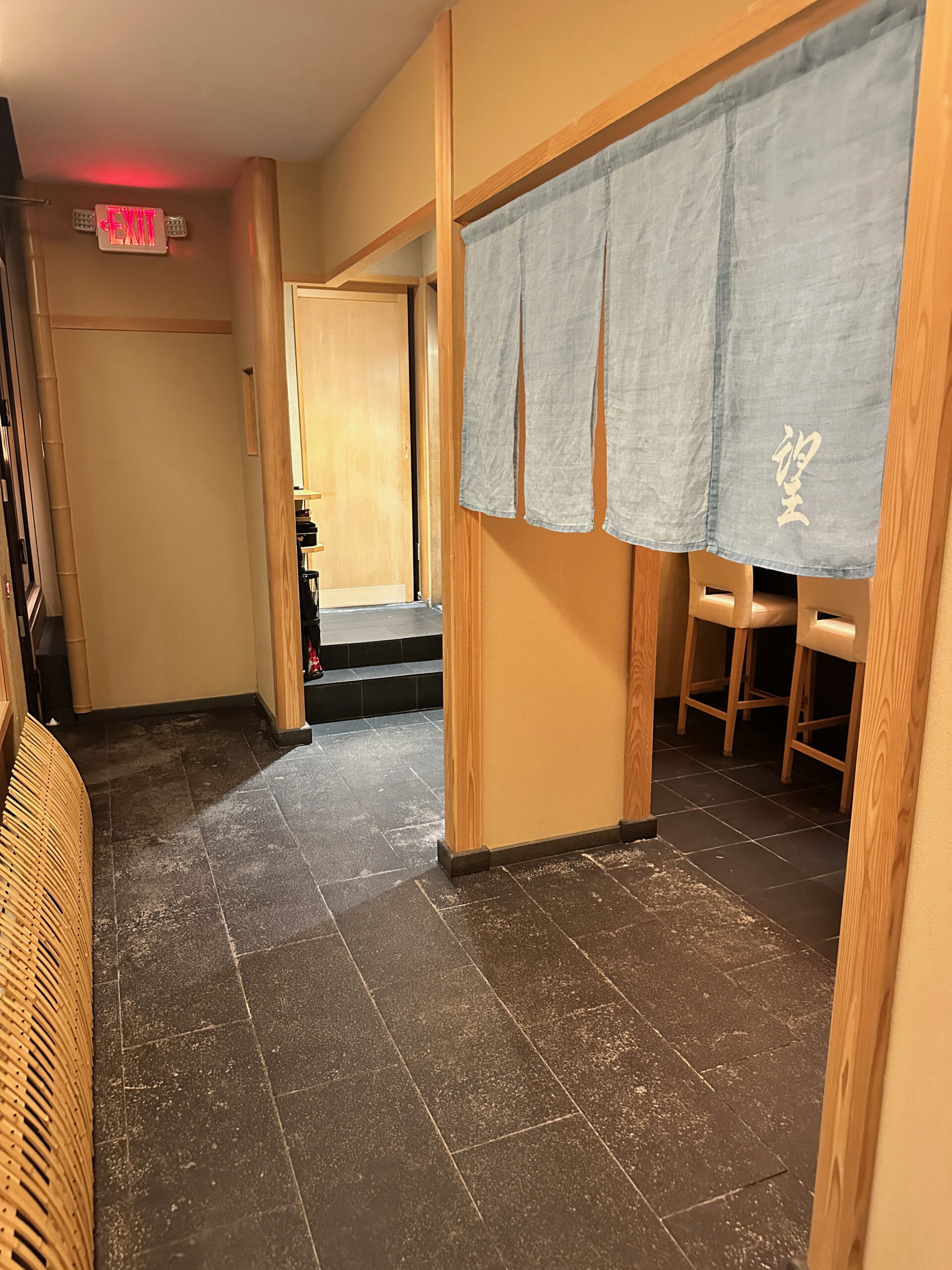
Inside Noz 17. Right is the main counter. Straight ahead is the broom closet/bar
But on the other hand, I’ve never considered the Noz Cinematic Universe to be among the city’s best
Certainly not in the same category as Sushi Sho or Icca, nor Yoshino or even Nakaji. The sushi is fantastic sure, but it’s always felt soulless to me, and I suspect I’m not alone. While the sushi is an ode to Japan – and delivers accordingly – the spirit is pure, unadulterated, 100% North American foodie capitalism. Michelin placards hang above the sushi counter. There’s no shortage of special collaborations. And drinks are pushed. Sweet Mother Theresa, they are pushed; if you relent, sommeliers will be over your shoulder every minute pouring a bottle (my father’s pet peeve).
Water offered is still or sparkling. Tap is available off-menu if you ask, but for the love of Hanaya Yohei, don’t make eye contact with the sommelier when you do. And this is pure “going off vibes”, but it feels like every employee hates each other. I said “feels like”, so please don’t sue.
Who ultimately cares when the sushi is so good at this price
For context, Noz 17’s main counter is presided over by Junichi Matsuzaki. Typical course range is in the mid 20s, heavy for New York. It’s not all sushi; otsumami and chinmi (delicacies) abound, and it’s gained a reputation among sushiphiles in the city. It’s priced at $465.
Adjacent is a small room, no bigger than a broom closet. I’m told it was originally the bar, but some bright mind decided to make it a junior counter. The Omakase served is $195 plus tax, billed on reservation, plus tip, heavily pushed drinks and any extras.
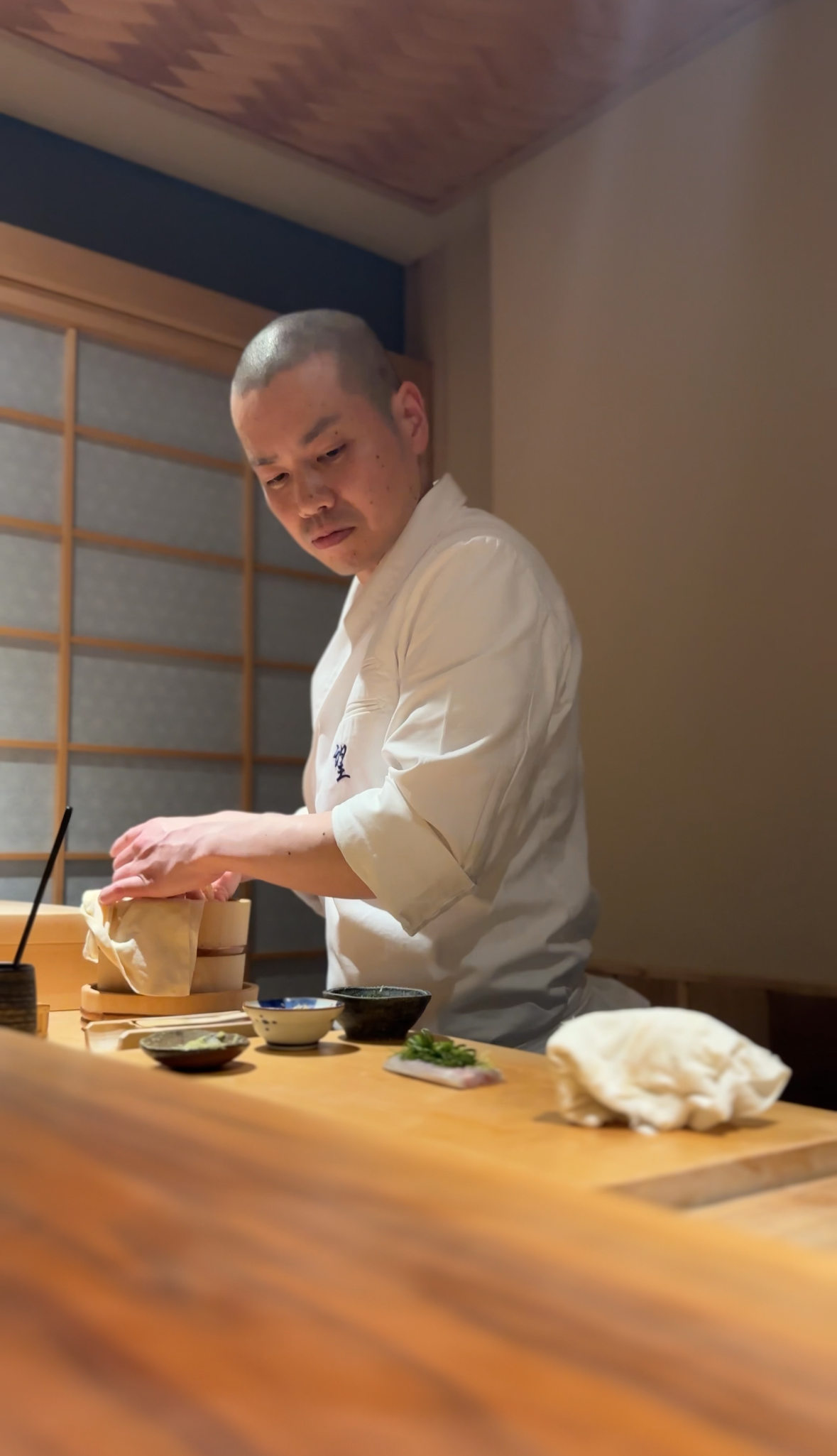
The Noz 17 Bar rotates apprentices from the kitchen. This is Kenta-san.
The chef rotates nightly
I like this concept. The team of apprentices take turns supporting Matsuzaki-san and the kitchen. So you’re getting them near the bottom.
That’s the good news. The bad news is that one of these finance bro is going to fall in love and fund Sushi Something in midtown for $695 per seating.
The night of my visit was ‘Chef Kenta’ (shout out New Japan Pro Wrestling). Predictably fabulous, and patient too. The party next to me – I dined solo, as losers do – were three NYU students. Nice kids who asked more questions than Regis himself.
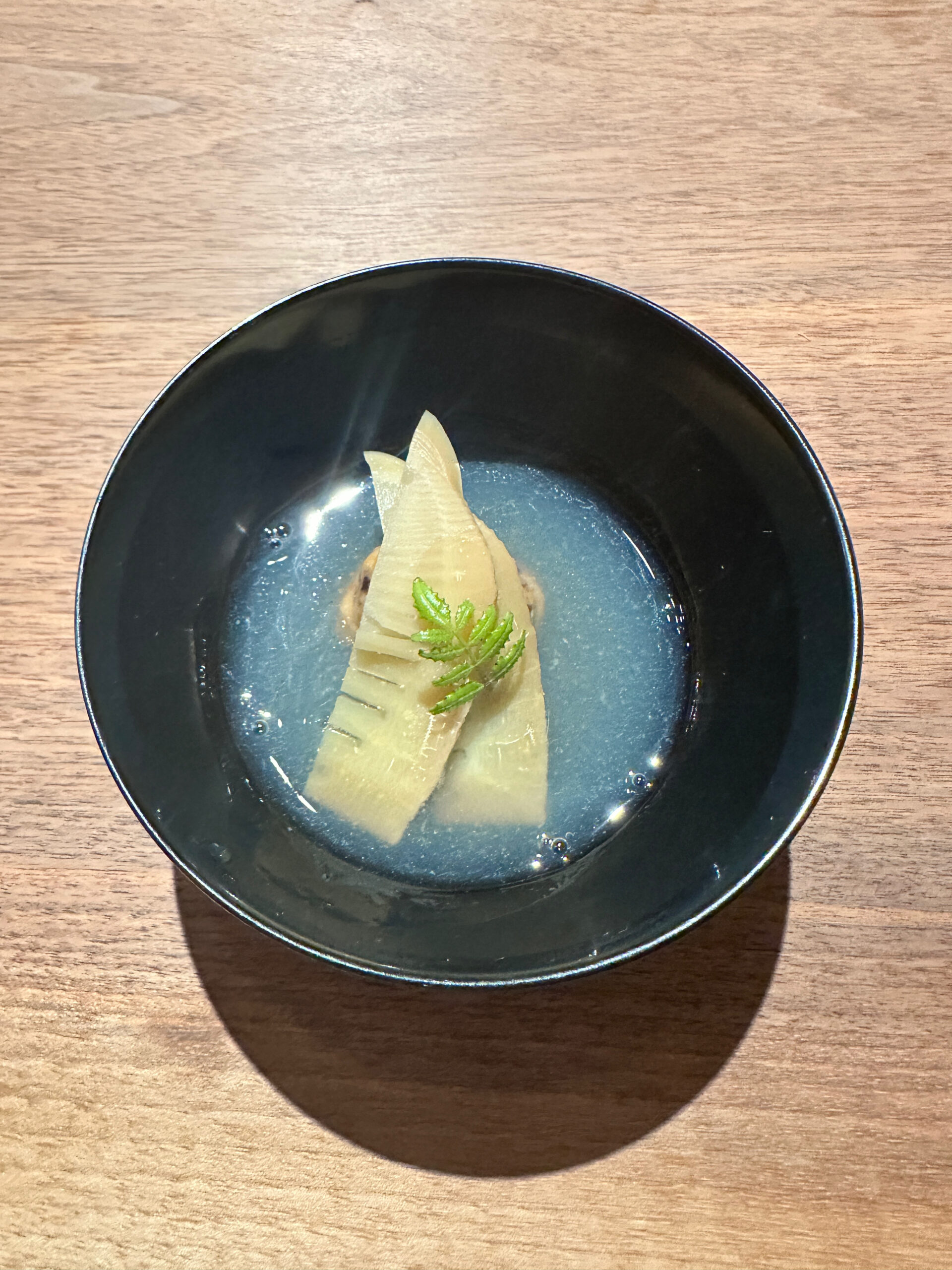
1: Cooked Hotaru Ika with Takenoko no kakani (boiled bamboo shoots and dried bonito flakes)
The sushi courses are immediate ‘nuts on table’ type stuff
Uh, pardon my french but I couldn’t think of a more appropriate phrase. ‘Nuts on table’ wasn’t in my thesaurus.
Torotaku – a wonderful amalgamation of toro, takuan and shiso – is typically served as a temaki (hand roll) or a makizushi (hand roll). That’s for practical reasons; it’s hard for a minced concoction to keep its shape without a vessel.
That is, unless, it’s precisely packed, as it was here (don’t worry, the takuan is in there somewhere).
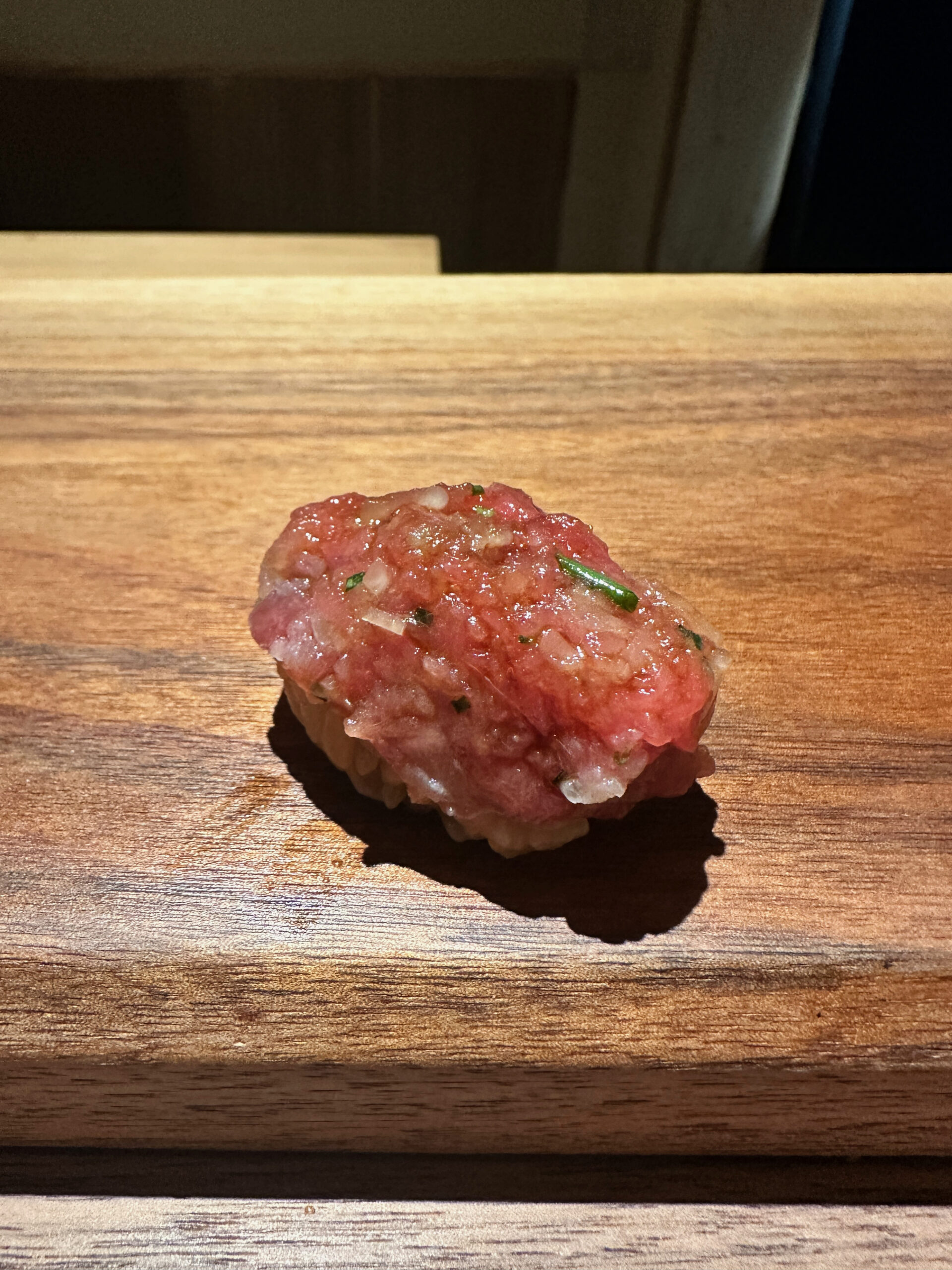
2: Toro taku
Kohada is next; I’ve said this before, but hikarimono (silver-skinned fish) are the sign of a true sushi legend. Not enough sushiya serve them – specifically Kohada – here in New York. This was fantastic.

3: Kohada
Ishidai may not look as striking as Kohada, but it’s actually even rarer on plates. The barred knifejaw is in season in late spring, early summer. Serving it exemplified the access and willingness that this sushiya/broom closet has to serve unique neta.

4: Ishidai (barred knifejaw)
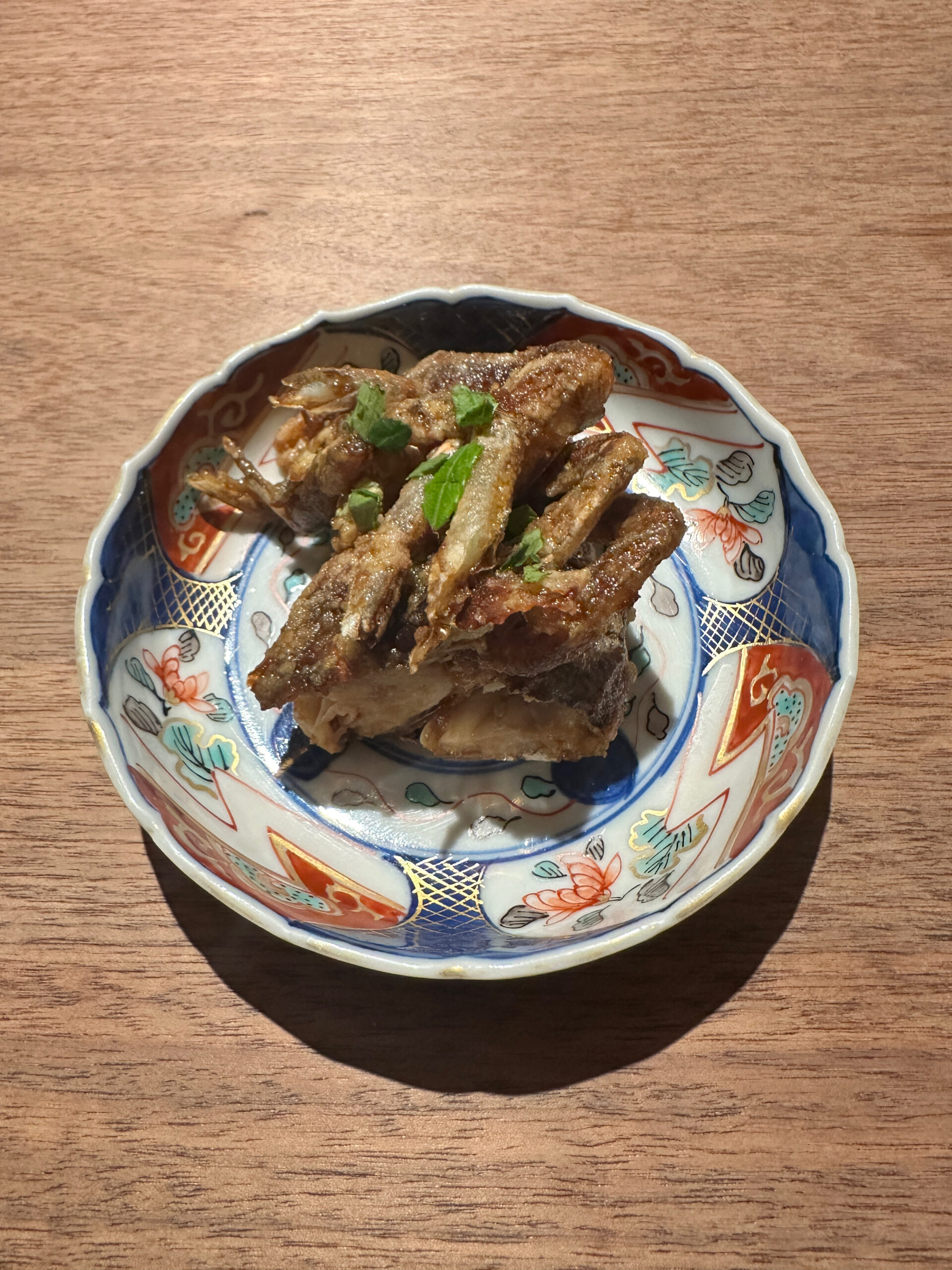
5: Soft shell crab
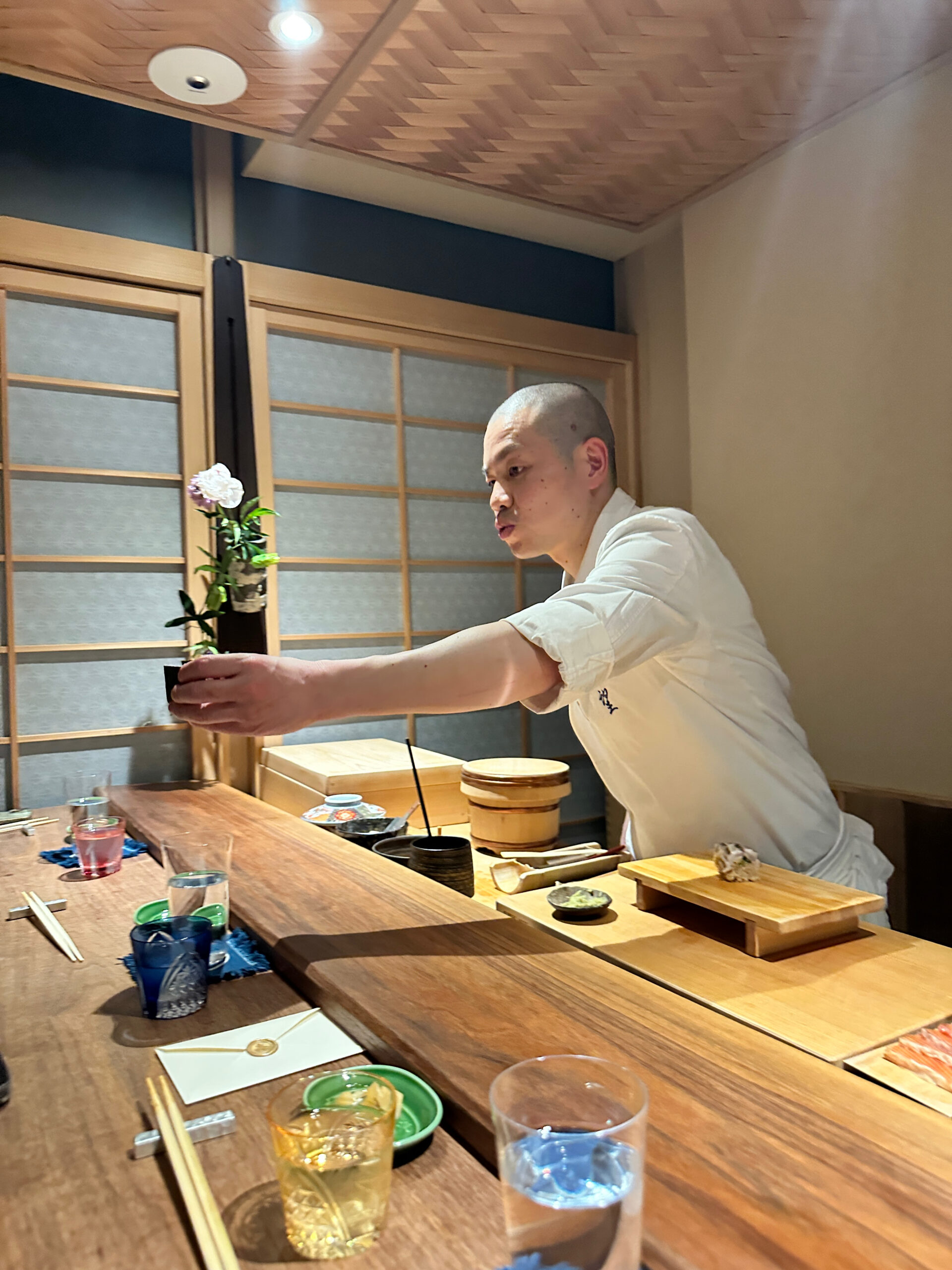
6: Kenta-san hands bozushi to a customer
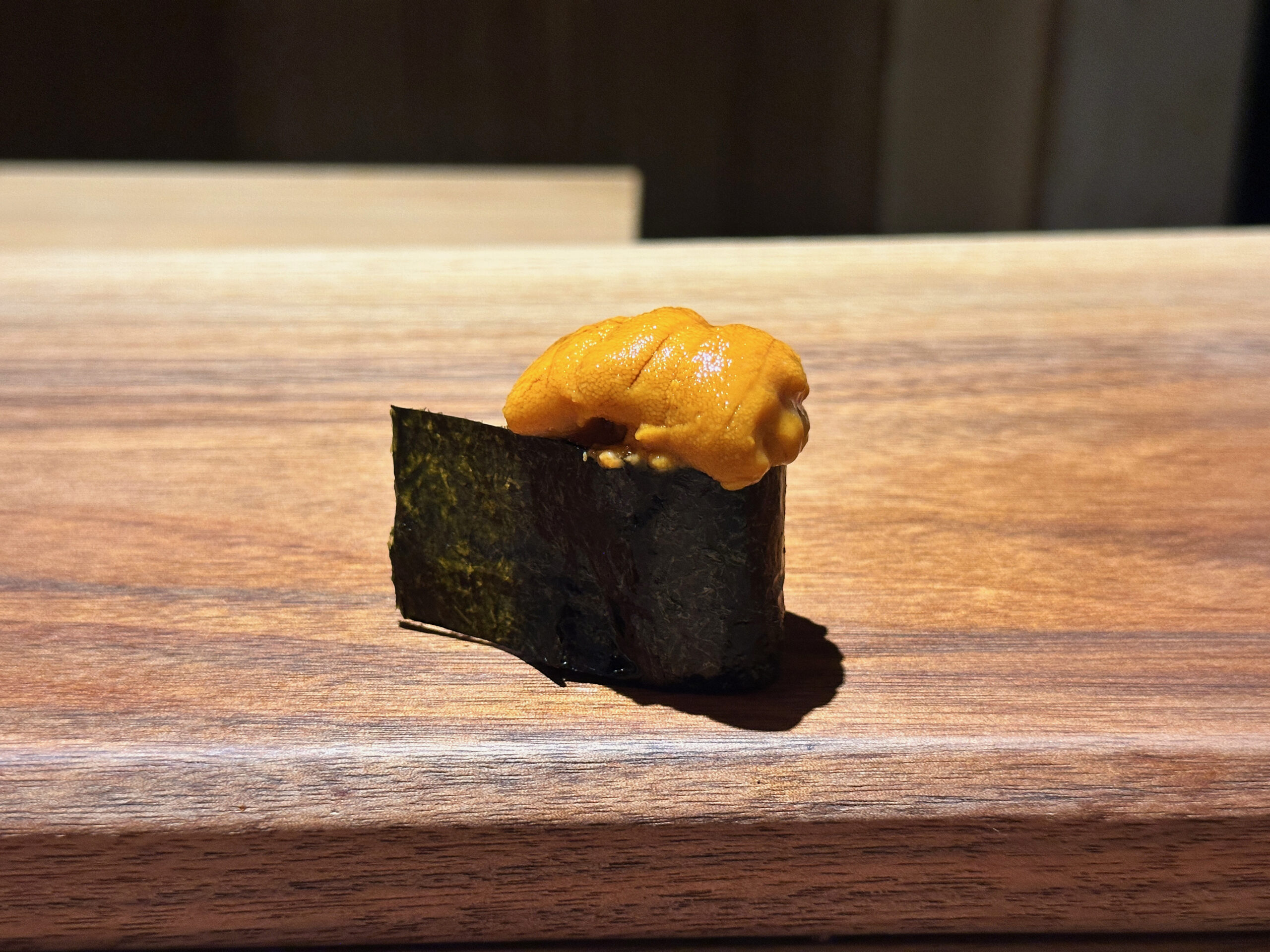
7: Uni

8: King Salmon 
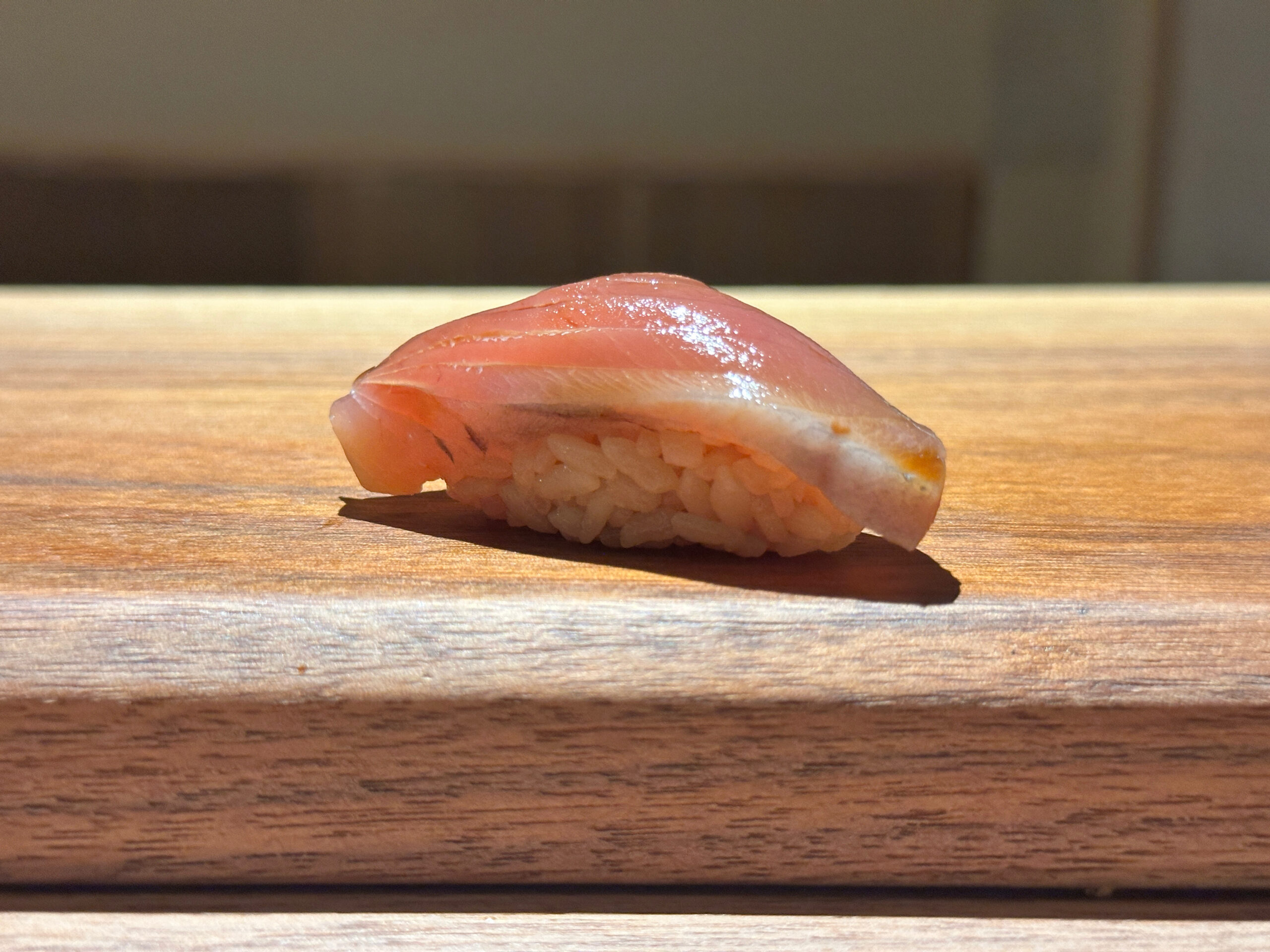
9: Katsuo
After Katsuo – we’re in the prime of the first of two Katsuo seasons each year – the 10th course was Ankimo temaki with Arare, the ends of the rice that are little crackers.
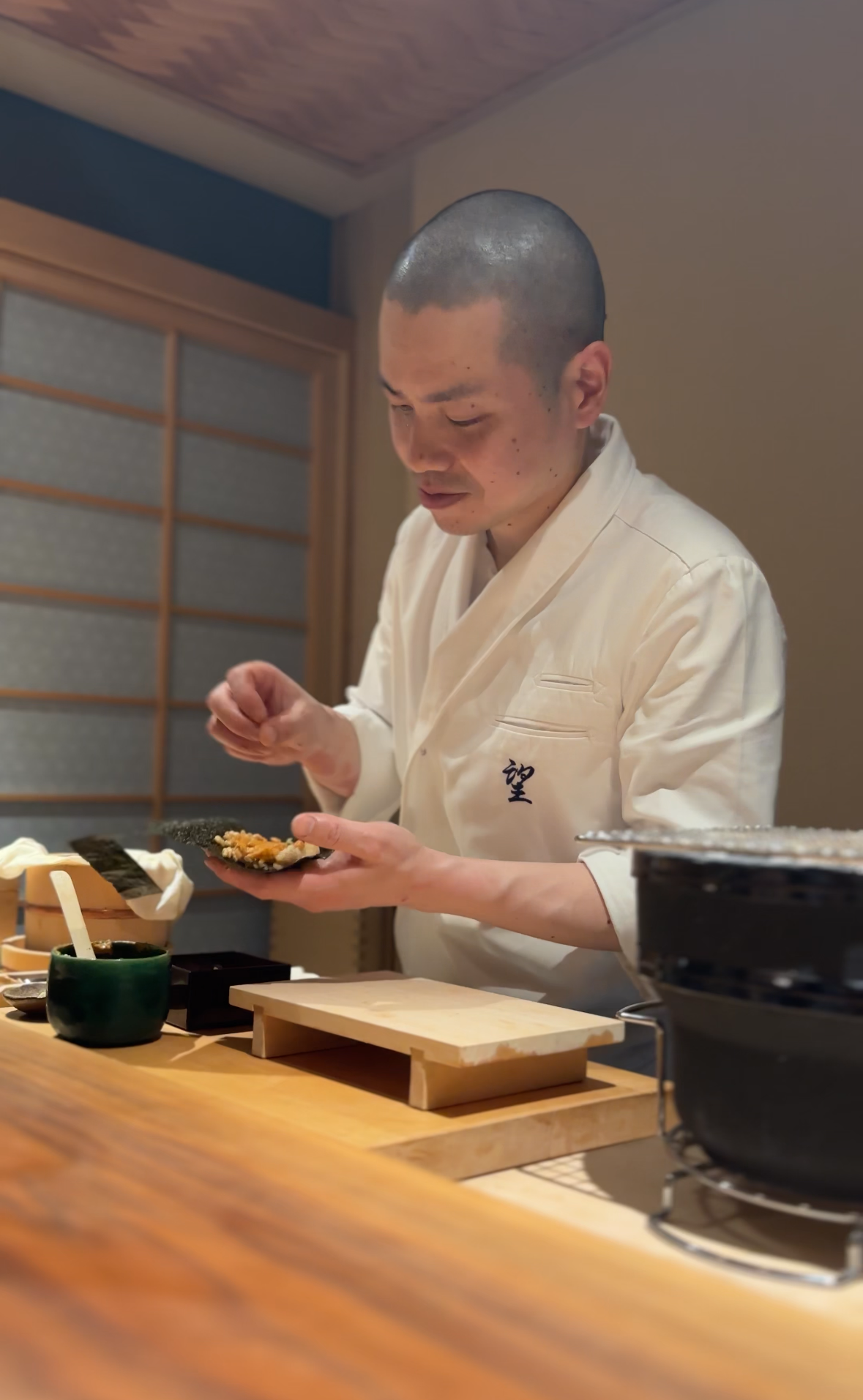
10: Ankimo temaki
Again, a unique approach to traditional sushi. Most sushiya in this city will serve negitoro or torotaku temaki (yes, I know they already served torotaku but work with me here).
My only issue
The 11th course was O Toro. Unlike the epidemic of chalkboard omakase in the city, Kenta-san thankfully avoided the butane. Even with binchotan, I’ll never understand the point of cooking something so delicious. Why?

O Toro looked amazing before it was barbecued
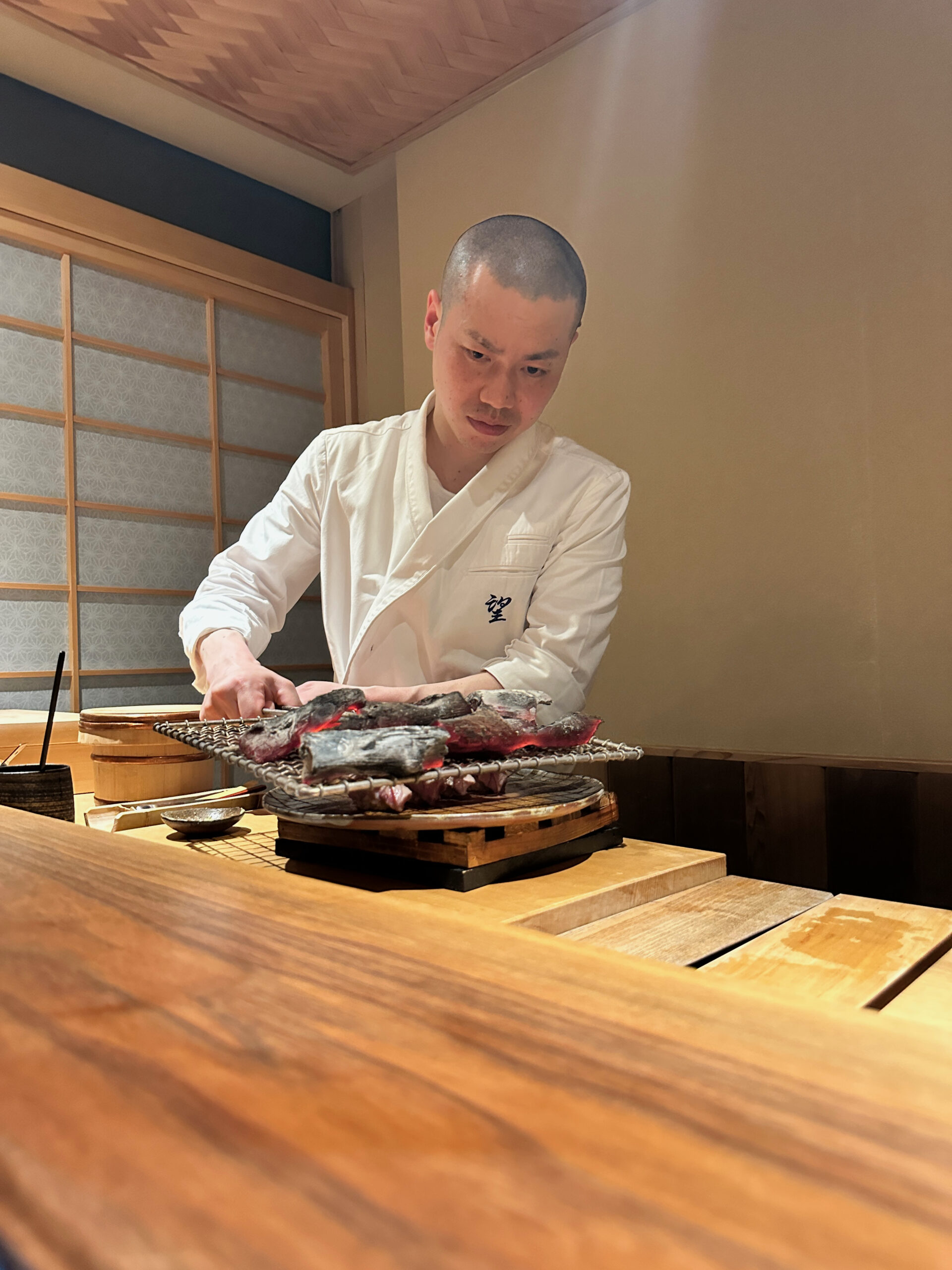
Binchotan on the O Toro

11: O Toro barely recognizable
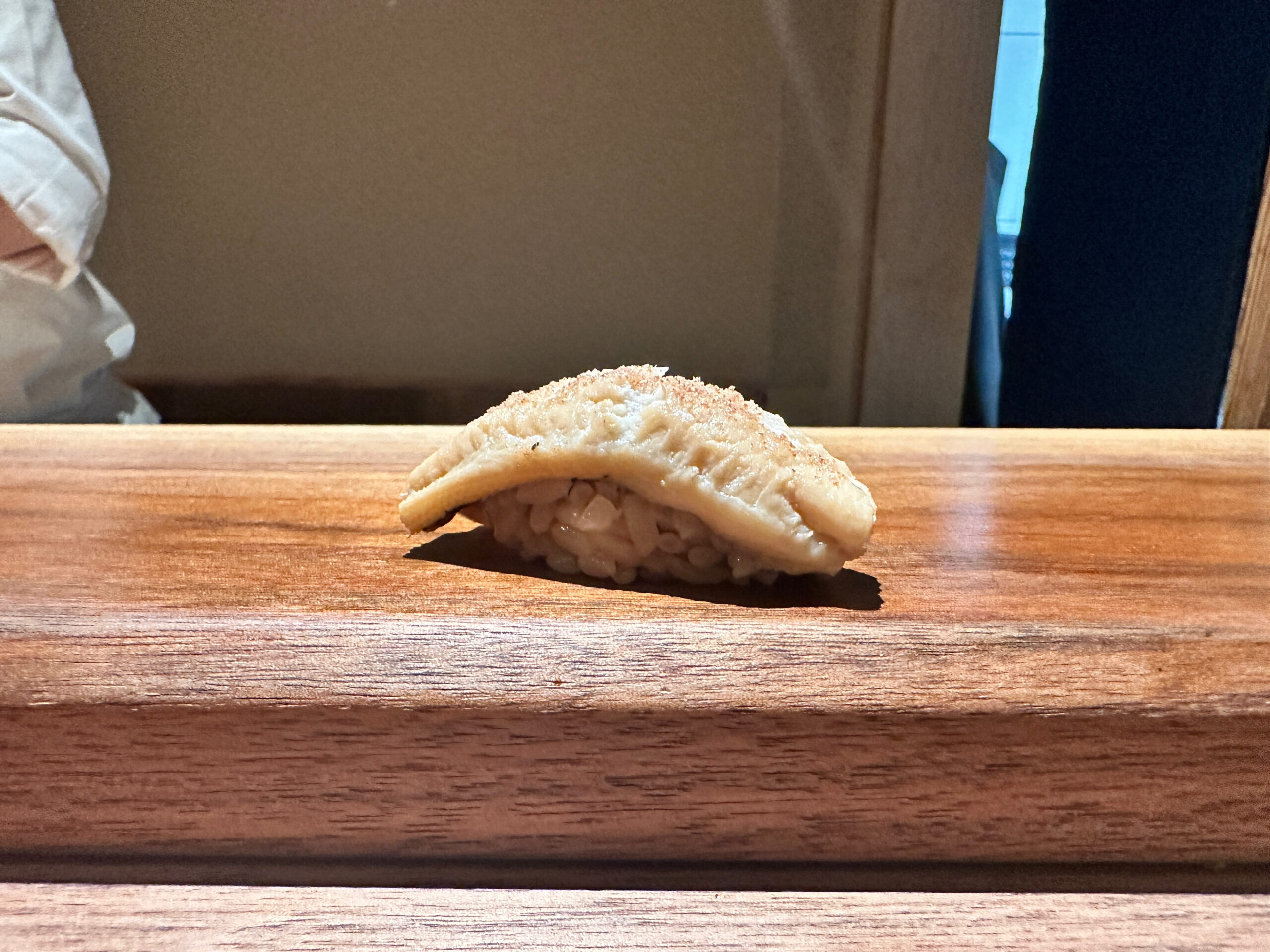
12: Anago
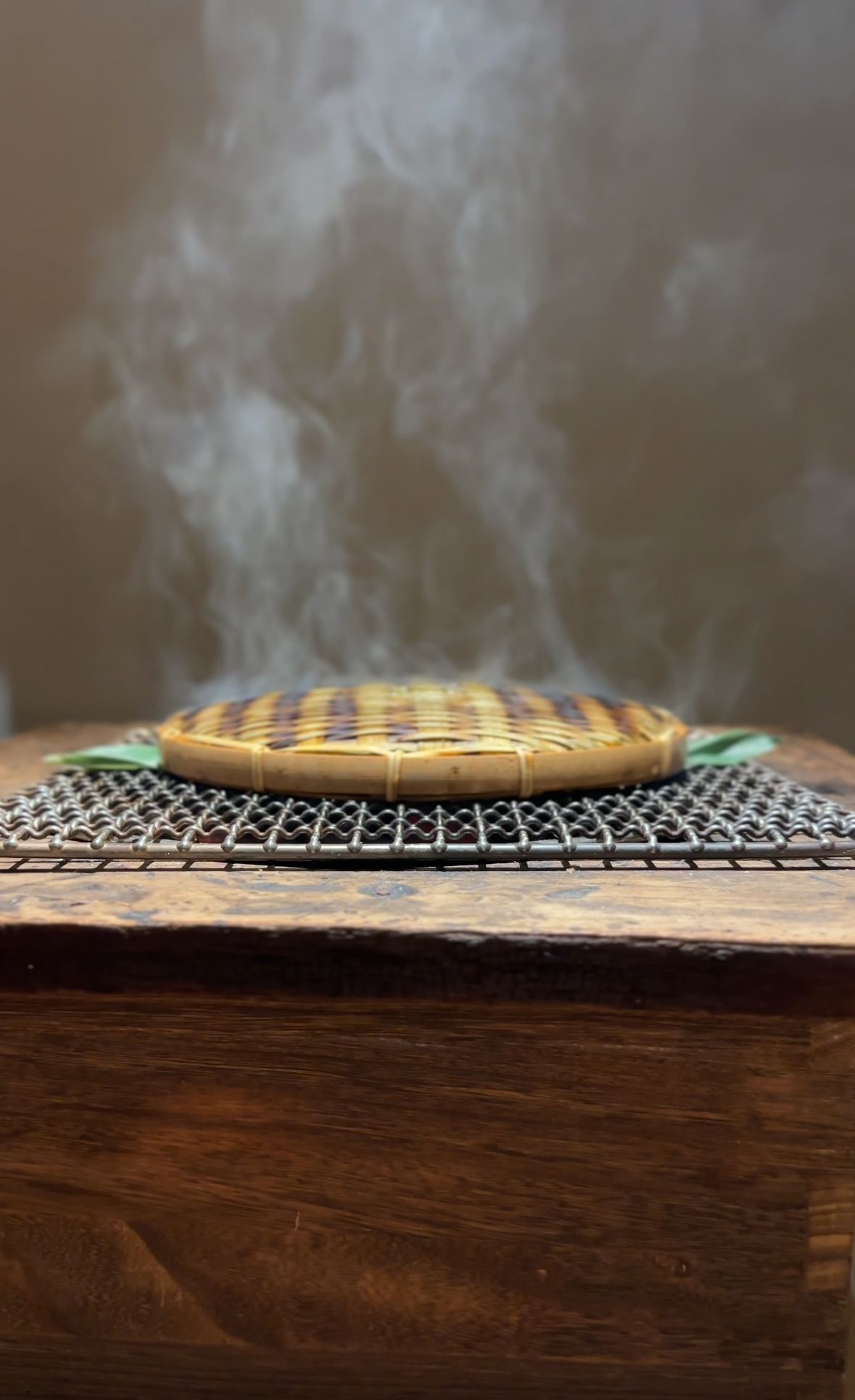
Extras are offered as they should be
Before the Tamago, there is Okonomi. A la carte, each course is about $25. Thankfully, unlike most similarly-priced Omakase-focused sushiya in New York City, there are other neta available, untouched by the Omakase itself. As a fan of both tradition and shiny new toys – I still have my lead painted Thomas The Tank Engine trains – this was a treat. Another perk of the Noz umbrella, though don’t expect Sushi Sho levels of okonomi. I counted three neta, and went with the Ma-aji.
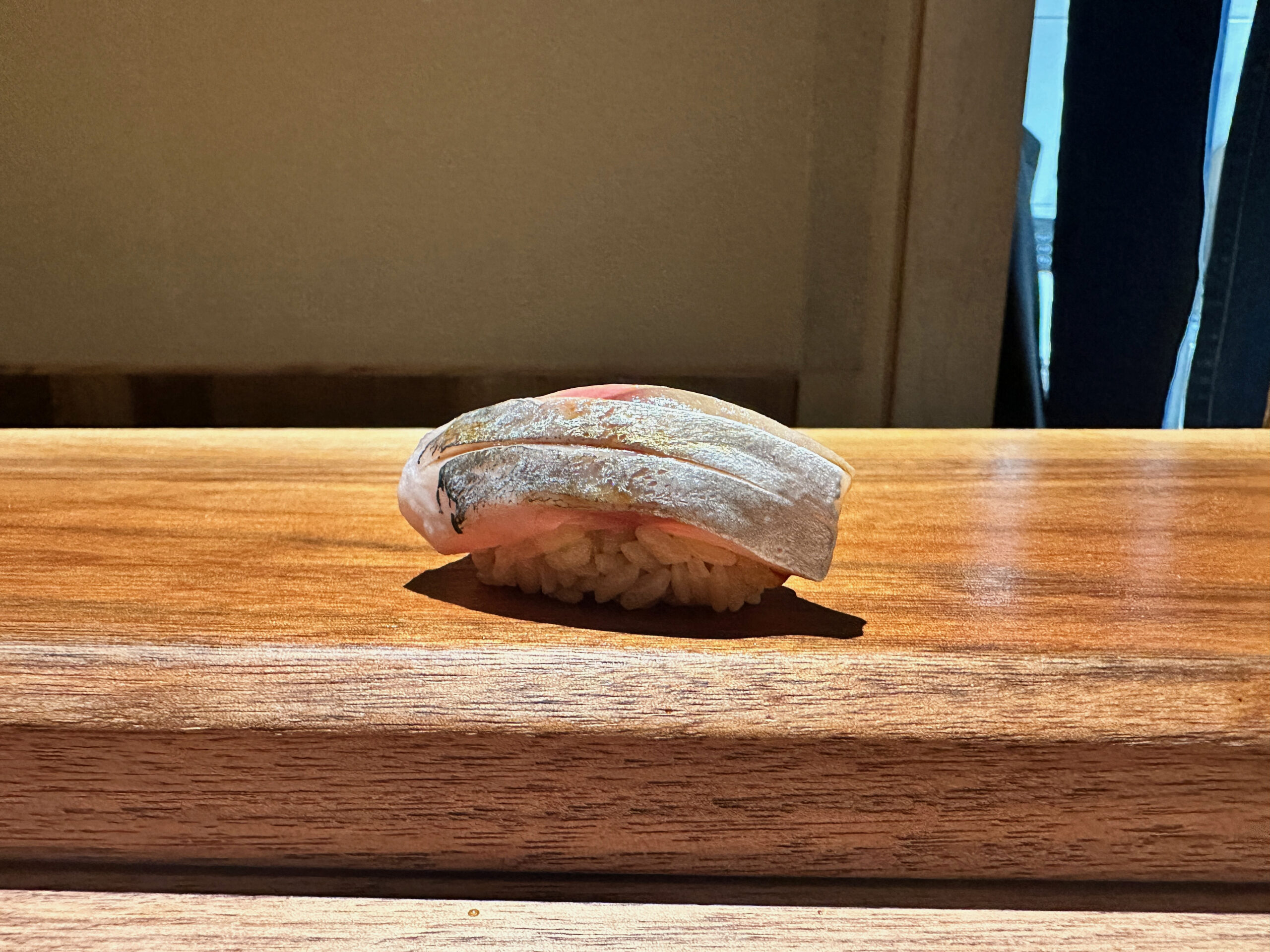
Extra: Ma-aji

13: Miso Soup
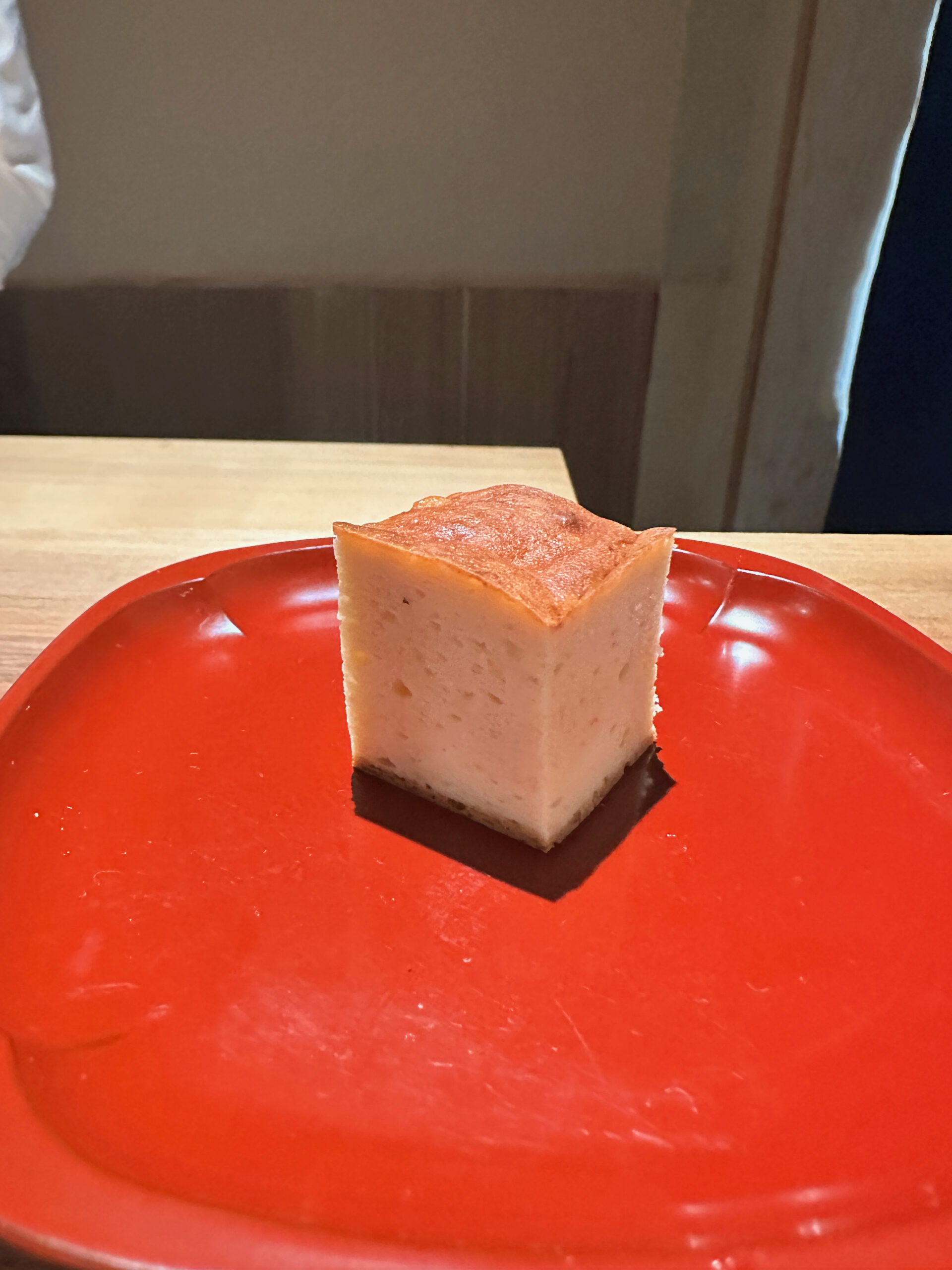
14: Tamago
Top-end sushi for $195 and reservations on OpenTable. We’re a Kissing Suzy Kolber away from 2012
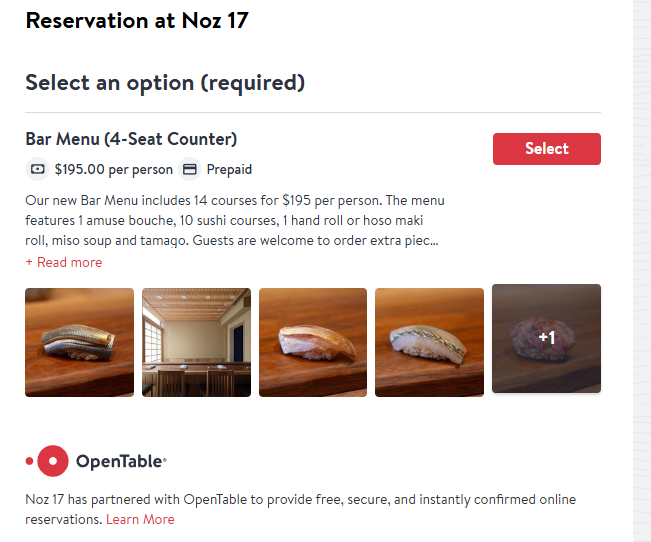
The reservation screen for Noz 17 Bar. It’s inside the Noz 17 page of Open Table.
Now, some may scoff at parts of Noz 17. There is the broom closet of course, and the apprentice still trying to perfect their techniques. Not me. I welcome it for the same reason I enjoy minor league baseball. Great atmosphere, hungry chef (figurately), hungry me (literally) and fantastic product. The Noz 17 Bar is not just an immediate add to my “revisit rotation”, it’s a recommendation for the holy trinity of nights out: expense accounts, first dates and friend dinners when you all have a little bit of money for the first time but also need to save $100 for next week’s lunches at Cava.
Too specific?
Recommended.
